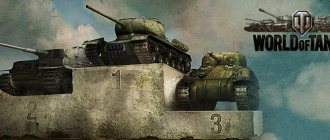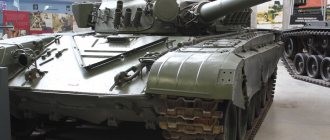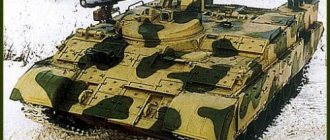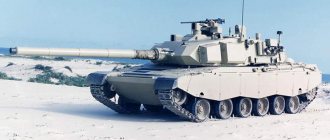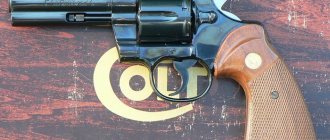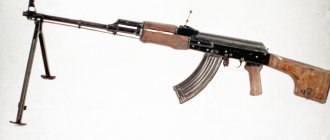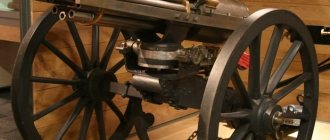The first similarities of ships appeared three thousand years BC. e. They were wooden ships and looked very primitive. Even then, people realized that this means of transportation made life much easier. Now ships perform many functions and are divided into types: cargo, passenger, military, fishing. They all differ in appearance, but each of them is beautiful in its own way.
Warships amaze with strength and power. They have always been a source of inspiration for artists. Cruise ships are luxurious and comfortable. White decks, luxurious cabins, luxurious interiors... Sailing ships are something out of the realm of fantasy. The grace of forms, the variety of sails and masts are not a ship, but a dream.
It is very difficult to choose the most outstanding ships, but we will try. This article will give you the opportunity to get acquainted with the ranking of the most beautiful ships in the world. Let's begin.
Aircraft carrier "Victory"
Her Majesty's Ship Victoria, 1960
Aircraft carriers generally do not shine with grace. It's all "Sir, this looks like a shoebox" and "OMG, my husband is in charge of a floating garage." But we love aircraft carriers, and if we look for beauty in them, then in this ship. Initially, Victories is a very proportional representative of its class. Successful modernization in the 1950s allowed the aircraft carrier to outlive many of its peers. Here it is, Her Majesty's ship "Victorious", flying somewhere about its business (in fact, undergoing tests) at full speed, raising a breaker and throwing a heavy breaker wave kilometers to the side. The Type 984's hefty 3D radar barrel rotates in search of targets, and the forward part of the flight deck is occupied by Sea Vixens - fighters as awkward as they are cute.
Sailing ship "Mir"
The three-masted training vessel Mir belongs to the Federal Agency for Maritime and River Transport. The ship first launched in 1987. Since then, he has participated many times in festivals and sailing regattas, repeatedly taking prizes. True, its main task is to train young sailors in maritime affairs. Every year cadets practice on it, so the ship is always in perfect condition.
The ship is also officially recognized as the fastest sailing ship in the world; its name is included in the Guinness Book of Records.
Battleship Scharnhorst
Battleship Scharnhorst during trials, 1939.
Functional and at the same time light silhouette of a heavy ship. The shape of the towers and superstructures immediately reveals a Fritz to a knowledgeable person. A signature product of the 1930s, when the sweeping lines of futuristic design emerged from the layers of steampunk. The ships of this period are probably comparable to the creations of Le Corbusier, Markelius and Melnikov in architecture - where functionalism was combined with avant-garde outlines and visual lightness of structures... And the Scharnhorst is a wonderful example of this trend.
Battlecruiser Hood
His Majesty's Ship Hood, 1920s
“Mighty Hood”, “royal yacht”, “battleship with the silhouette of a light cruiser” - as they called it. A battlecruiser laid down on the day of the Battle of Jutland - the last general battle of heavy artillery ships - she was late for the war for which she was intended. The elegant, deceptively light silhouette, which provides excellent driving performance, conceals its gigantic dimensions: forty thousand tons of displacement. A brilliant career as a social star, a constant leader, a favorite of kings, and a heroic death in the end. What else do you need for a legend?
Barque "France II"
Five-masted sailing ship. One of the largest sailboats. Built in France (Bordeaux) in 1911 to transport goods.
The barque, despite its purpose, was characterized as a clean and elegant vessel. During its creation, several original design solutions were used, which placed it one step above similar ships. Every effort was made to ease the manual labor of the deck crew. The use of a two-shaft installation, the presence of a radio station...
The vessel could not be used for its intended purpose. The war began, and the ship occasionally went out on sporadic voyages, risking getting hit by a torpedo. The war spared the France II , only in 1922 it ran aground. The crew escaped and the sailboat was left to the mercy of fate. Under the influence of the waves, it quickly collapsed, leaving only a pile of metal.
Interesting fact: the ship was named after its predecessor. France sank in 1901. The creators neglected the custom of not naming the ship with an “unlucky” name. Coincidence or not, France II suffered the same fate.
Battleship "Richelieu"
Battleship "Richelieu" on a voyage, 1953
Ah, this is the forward arrangement of the main caliber towers and their harmonious combination with the superstructure and deck line. What aspiration, what a hymn to speed! Another graceful heavyweight. France, which was distinguished by completely chimerical (albeit rational in its own way) ship designs in the pre-dreadnought era, in the 1930s and later gave birth to a whole string of aesthetic masterpieces - bright and sunny, like the country that created them. But Richelieu and its sister ship Jean Bart stand out even against this background. The pirate and the cardinal are power!
Bark "Kruzenshtern"
4-masted Russian barque. Commissioned in 1926 in Germany. It was intended for cargo transportation and often acted as a training vessel. After World War II it became the property of the Soviet Union. Now the bark belongs to the Baltic Academy of the Russian Fishing Fleet. He travels through cities and countries, periodically making expeditions around the world.
Is it worth talking about the beauty of the sailboat? Kruzenshtern is great. Slow, romantic, majestic... You can call him a legend. In 5 years, the ship will celebrate its 100th anniversary. But only a few ships get such a lucky opportunity; most of them turn into a pile of metal.
Leader of the destroyers "Tashkent"
The leader of the destroyers "Tashkent" during testing (still without artillery), 1938
"Blue Cruiser", a short and glorious legend of the USSR Navy, built by Soviet order in Italy. A swift silhouette, tailored for a maximum speed of 43 knots with a hook, snow-white breakers, wide pipes, hinting at the enormous power of the machines (not every battleship had 130 thousand horsepower, but here the leader of destroyers with 3000 tons of standard displacement). “Tashkent” became one of the acquisitions of the “Italian era” of the development of Soviet shipbuilding, and echoes of this design are still heard.
Frigate "Amerigo Vespucci"
Training sailing ship of the maritime academy in Italy. Built in 1926 by order of Benito Mussolini. The dictator dreamed of creating a powerful navy. Perhaps this fact influenced the appearance of the ship. It is very different from many other sailing ships, similar to a battleship.
When creating, old-fashioned design elements were used. The ship is controlled using a steering wheel, although this is no longer necessary, this is a tribute to tradition. The frigate's coloring is also typical of warships. Bright individuality - this phrase perfectly characterizes “Amerigo Vespucci” .
Battleship "Littorio"
Battleship "Littorio"
Another Italian, this time actually Italian. We know everything about the unsuccessful main-caliber artillery, and about the generally not very glorious history of the Italian fleet in World War II, but we are talking about beauty here. And Littorio and its sister ships - Vittorio Veneto, Roma and the unfinished Impero - are amazingly beautiful. The forward superstructure is like the tower of an Italian medieval city, the graceful tops of the smokers are slightly tilted back, the empty, clean stern with a long catapult rod for a seaplane. Fashion model. And in general the model. Collecting at least one Italian is the destiny of every self-respecting boat painter.
"Persistent"
Destroyer, flagship of the Baltic Fleet. Purpose: destruction of ground targets, air defense facilities, enemy equipment and manpower. Can provide fire support for landing forces, transport and landing ships. Destroy surface ships and means of landing enemy troops.
Can patrol and perform combat service along with other front forces.
Patrol ship "Smetlivy"
The patrol ship "Smart" in the port of Grand Harbor, Malta, 2013 (photo: Anton Blinov)
But the pass from the Italians to the Russians, having skipped the Second World War with a couple of rebounds in the late 40s - early 50s, bursts into the nuclear missile race. Do you recognize? This graceful wave-like silhouette with a razor-sharp stem, light lattice mast structures, wide smokers (we already have gas turbines), and for their high sound these ships will be called “Singing frigates”. And of course, guided missile launchers. New era. Large anti-submarine ships/patrol ships of Project 61, there were twenty of them in total. Now this is “Smartly” - a grandfather, a veteran and a legacy, and then, in the 1960-70s, it was the dawn of the scientific and technological revolution.
"Admiral Chabanenko"
A multi-purpose frigate with missile weapons, it belongs to the Russian Northern Fleet. It is armed with automatic cannons, anti-aircraft guns, cruise missiles, 8 torpedoes, and mines. There is a hydroacoustic complex, electronic weapons, target detection systems, navigation, warnings about laser irradiation. The aviation group consists of 2 anti-submarine helicopters.
Large and powerful ships, surface and underwater, form the backbone of the navy. They have modern weapons and systems that allow them to detect enemy weapons, avoid detection themselves, and conduct combat operations.
Large anti-submarine ship "Kerch"
Large anti-submarine ship "Kerch"
If you think that the USSR has run out of beautiful ships, then you are thinking wrong. “Kerch” is here for a reason, it is an internationally recognized photo model of Project 1134B, according to the drawings of which the Americans tried to use algebra to believe in harmony - they drew “lines of force” in search of an answer to the question of why Soviet ships look swift and menacing. It really looks like it. Both swiftly and menacingly. The “center of gravity” of the superstructures visibly shifted back and the antenna posts and combat systems directed forward and upward give a visual sense of speed and power. Now the old “Kerch” is living out her days laid up, but, let’s hope, she will become a museum ship.
Heavy cruiser "Tone"
Heavy cruiser "Tone"
Japanese heavy cruisers are wonderful, and if we had our way, the rating would consist entirely of them, but let's take one anyway, we'll tear it off with blood, one might say. Last project. The long profile with a graceful rise of the forecastle to the stem is just right for the endless waves of the Pacific. The main caliber turrets grouped in the nose... maybe not too good in terms of combat stability, but it makes it easier to control fire, and what a look! In the openings of the bulwark closer to the stern, 610-mm torpedo tubes are dozing - the “long sword” of the Imperial Japanese Navy, which will claim many ship lives! The moderately heavy superstructure hints at the ship’s respectable class, and the tilted combined smokebox hints at its speed capabilities. The stern is occupied by an air group - reconnaissance seaplanes. This is generally very similar to the decisions of the future 1960s, but then helicopters will already appear on ships.
Warships. Cruisers. Possibly the best, but very expensive
Very often in my stories I say that “the ship is not without its shortcomings,” “it could have been better,” and so on.
A sort of blowing of grumpy bubbles from under the water. In fact, of course, I very dearly adore these such contradictory ships. But cruisers are a wonderful class, and most importantly - beautiful and independent. Not like trough carriers and other floating giants that require protection and defense. Anyone who has been following this series for a long time (and at least 52 articles have already been published) has probably already concluded that there are ships that I treat with more respect than the others. These are definitely “Hippers” and “Mogami”. Moreover, “Mogami” in its light form was even more interesting than in its heavy form.
And now there are others joining them for company. Two of the best British light cruisers, two pearls of royal shipbuilding. The characteristics were definitely top of the world class cruisers, but there was perhaps only one drawback - the huge price. Comparable to the cost of building a heavy cruiser. But first things first, as always.
And – we meet, “Edinburgh” and “Belfast”.
Scotsman and Irishman. Yes, only two ships were built. Their fates turned out to be different, but we can only say unequivocally that they were simply beautiful ships. "Edinburgh" took part in the sinking of "Bismarck", "Belfast" took part in the battle in which the "Scharnhorst" was sunk. But about the track record in due time, let’s go in order.
And the order was as follows: having cut their teeth on the development and construction of the Linder, Arethusa, Sydney and Southampton series of cruisers, the British shipbuilders came to their crowning glory - the Town series, ships not without flaws, but very, very good .
In principle, the Towns came very close to the heavy cruisers of the County type in terms of armament and power plant power, and even surpassed them in terms of armor.
At that time, the arms race was already in full swing in the world, and the main shake-up for everyone was caused by the Japanese, who created the Mogami, the armament of which at that time consisted of 15 155-mm guns and had an armored belt 102 mm thick and armored cellars 140 mm thick.
"Mogami" still in the form of a light cruiser
The Americans responded with "Brooklyns", which had even thicker armor (belt from 127 mm to 82, turrets 165 mm forehead, barbettes 152 mm, and so on) and armament of 15 152 mm guns.
In general, given the higher rate of fire of 155-mm and 152-mm guns compared to 203-mm, the weight of the salvo made the light cruisers closer to the heavy ones.
In general, this balance of power did not suit the British at all, and therefore it was decided to convert the last two cruisers of the Town series into light cruisers so that they could compete with the Mogs and Brooklyns. It is clear that with “Brooklyn” on paper, but the Japanese could easily become opponents.
But in order for the new ships to be comparable to American and Japanese ones, it was necessary to increase the number of guns to 15. But there were problems with this. Five towers, as on Japanese or American cruisers, were impossible to accommodate on British ships; there would be a problem with docking, since the British docks could not accept ships longer than 188 meters. And the five-turret cruiser designed by British shipbuilders could not be shorter than 195 meters. Not much, some 7-8 meters, but this is enough for problems to start.
There was a project to equip ships with four turrets with 4 barrels each, which ultimately gave 16 guns. However, even in this case, the cruisers “corroded” in width, which entailed an increase in length and armor, and required other elevators for ammunition. Well, the new towers did not fit into the allotted volumes of the ships; they had to be raised to the forecastle level. On the one hand, this worsened stability, on the other, it gave some advantage when shooting, especially when there was rough seas.
But in the end, it was not possible to build four-gun turrets. More precisely, it was not possible to solve the problem of projectile dispersion during a full salvo. Powder gases from closely spaced barrels (a little more than a meter) had a negative effect on the projectiles and greatly increased dispersion. It was necessary to increase the distance between the barrels, and this entailed an increase in the width of the hull.
In the end, they decided to return to conventional three-gun barrels. But the enlarged deck made it possible to install 6 twin installations of 102-mm universal guns in the project instead of the usual 4 and increase the fuel supply by more than 300 tons, which increased the cruising range.
The use of standard towers made it possible to spend the freed weight on armor and other useful things. The alteration began in 1936 and lasted quite a long time. It was necessary to reduce the artillery magazines, rearrange all control posts, moving them under the armored belt and armored deck, and design box-shaped protection for the magazines.
102-mm anti-aircraft guns were spread along the entire length of the ship, four-barreled 40-mm “pom-poms” were replaced with eight-barrel ones and moved to the second chimney.
Belfast was laid down at Belfast, Edinburgh at Wallsend in December 1936. The “Godmother” of “Belfast” was the wife of Prime Minister Chamberlain. Edinburgh was the first to enter service, on July 6, 1939, Belfast on August 3 of the same year.
Structurally, these ships were not very different from the Towns. The main difference from the “Town” series was the different placement of boiler rooms and engine rooms and the equipment of ammunition magazines for 102 mm guns in front of them. Plus, the location of the pipes was changed to reduce smoke on the bridges. And the cruisers acquired very characteristic and recognizable silhouettes.
In general, the ships turned out to be adequate in terms of stability and seaworthiness, however, the raised main battery turrets still affected the stability of the ships, especially when fuel was consumed from the bottom tanks.
Therefore, it was recommended to fill the empty tanks with sea water. But the rolling on these cruisers was surprisingly smoother.
Booking
The cruisers had an armor belt 114 mm thick, which covered the hull between the 26th and 238th frames.
The belt dropped 91 cm below the waterline and rose to the level of the main deck, and in the area of the power plant to the upper deck. The armored deck had a thickness of 51 mm; in the area of the artillery cellars, the thickness increased to 76 mm.
The steering mechanisms were enclosed in an armored box 25 mm thick, and the same 51 mm armored deck covered it on top.
The towers were armored with sheets 102 mm thick in the frontal part and 51 mm thick on the sides and top. The barbettes of the towers also had a thickness of 51 mm.
Universal guns had shields 13 mm thick, and superstructures were armored with sheets ranging from 6.5 to 16 mm thick. Rangefinder posts and transitions had armor 13 mm thick.
In general, it turned out that Edinburgh and Belfast had more significant armor than even the heavy cruisers of the County class.
Power point
The main power plant consisted of four Parsons turbo-gear units and four Admiralty-type three-collector steam boilers.
The installation layout is echelon. Each TPA consisted of two high- and low-pressure turbines, which operated on one gearbox. With a design power of 82,500 hp. the maximum speed was supposed to be 32.5 knots. During testing, Edinburgh showed a power of 81,630 hp. and reached a speed of 32.73 knots with a standard displacement of 10,550 tons. The cruising range was calculated to be 12,200 miles at a cruising speed of 12 knots with a fuel supply of 2,260 tons.
The standard displacement during testing was 10,550 tons. Cruising range is 12,200 miles at a 12-knot economic speed with a fuel supply of 2,260 tons of oil.
Crew
The peacetime crew consisted of 781 people.
The flagship had a crew of 881 people, of which 36 were officers and persons equivalent to them (such as a chaplain and a flagship doctor). Living conditions were very good. Senior officers lived in single cabins, junior officers lived in double cabins. The sailors lived in cockpits for 12-24 people and slept in hanging bunks.
The cruisers were equipped with everything necessary for long voyages: an infirmary, medical offices, a church, a bakery, a ship's store, and showers.
Armament
The main caliber of the cruisers was 12 Mk-XXIII 152-mm guns in four three-gun turrets.
All three barrels in the turrets were located in individual cradles, and the middle gun was moved back 760 mm so that the gases fired from it would not have such a strong effect on the shells flying out of adjacent barrels during a salvo.
The guns could be loaded at elevation angles from -5 to +12.5 degrees. The rate of fire of the guns was limited by the rate of delivery of shells and charges from the magazines, namely 12 rounds per minute.
The main caliber fire was controlled using two directors located on the stern and bow superstructures. The information was sent to the central fire control post and processed on a mechanical computer.
The 152-mm Mk-XXIII gun sent a projectile weighing up to 14.5 kg to a range of up to 23 km with an initial speed of 841 m/s.
Flak
Long-range anti-aircraft artillery consisted of 12 102 mm guns in twin mounts.
The guns sent projectiles weighing 15.88 kg at a range of up to 18 km and at an altitude of 11.89 km with an initial speed of 854 m/s.
The estimated rate of fire was 12 rounds per minute, but in real combat it was lower and was also limited by the speed of supply of ammunition from the magazines.
At medium distance, two eight-barreled Vickers Mk-IVA “Pom-Pom” machine guns with a 40-mm caliber worked.
The initial projectile speed is 732 m/s, the firing range is 6,220 m, the height reach is 3960 m. The combat rate of fire is 98 rounds per barrel.
The closest-range anti-aircraft armament consisted of two four-barreled Vickers machine gun mounts with a caliber of 12.7 mm.
Mine and torpedo weapons
The ships were equipped with two three-tube torpedo tubes of 533 mm caliber.
The ammunition consisted of 12 torpedoes, 6 spare torpedoes were stored in a special armored room between the torpedo tubes.
Armor thickness 16 mm. The cruisers' anti-submarine armament consisted of Mk-VII depth charges. Six bombs were on rails on the upper deck in combat readiness, and 15 spare ones were in a special room on the starboard side.
Aviation weapons
The cruisers were equipped with a 28-meter-long D-1H powder catapult, on which a Supermarine “Walrus” seaplane stood.
Two more of its brothers were housed in two hangars in the bow superstructure. To lift the aircraft on board, two 7-ton electric cranes located behind the catapult along the sides were used.
Modernization
Naturally, they worked very actively on the ships, modernizing them to meet the requirements of the time.
A special feature of the ships was their primary equipment with radars. Edinburgh received its first Type 279 radar in the first half of 1940. In 1941, the cruiser's air defense was strengthened by installing 6 single-barrel 20-mm Oerlikon machine guns.
In March 1942, the Type 279 radar was dismantled and three were installed in its place: types 284, 285 and 273. In this regard, Edinburgh became one of the best ships in the fleet. British radars, it must be said, were only slightly worse than American ones, but were superior to similar devices created in other countries.
"Belfast" was very radically modernized during the repairs that were done after the cruiser was blown up by a mine in 1940. Anti-torpedo bulges were installed on the sides, which increased the width and draft of the cruiser (up to 20.22 m and 7 m, respectively) and reduced the speed to 30.5 knots. But it was clearly worth it.
During this repair/modernization, the installations of 12.7-mm machine guns were removed and instead, 5 double-barreled and 4 single-barrel installations of 20-mm Oerlikon anti-aircraft guns were installed. In addition to the machine guns, five radar stations were installed, types 281, 282, 284, 285 and 273.
In June 1943, the anti-aircraft weapons were strengthened by 4 single-barreled Oerlikon machine guns; a year later, in May 1944, instead of one twin installation, 6 single-barreled machine guns appeared.
In 1944, during the next repair, Belfast lost two twin mounts of 102-mm guns and eight single-barrel Oerlikons. Instead, they installed 4 quadruple and 4 single-barrel 40-mm Vickers Mk-IVA anti-aircraft guns. The catapult was dismantled and all aviation equipment was removed, radars of types 273,281 and 284 were removed, and radars of types 281b, 274, 277, 293 and 268 were installed instead.
In August 1945, 2 more twin Oerlikon installations were removed and 5 single-barrel Bofors 40-mm calibers were installed, two of them with Boffin power drives.
During post-war modernizations, Belfast lost all small-caliber anti-aircraft artillery, instead of which 4 single-barreled and 6 twin-barreled 40-mm Bofors with servos and modern CRBFD fire control systems were installed. The 102 mm gun mounts were also equipped with servos and the latest MRS-3 control systems
New radar equipment was installed: - airspace control station type 960; — station for determining the height of air targets type 277Q; — surface target detection station type 992; — navigation station type 974.
Only the type 274 radar remained unchanged, which provided data to the artillery directors.
Combat use
"Edinburgh"
The cruiser's combat service began in October 1939. Together with Aurora and Southampton, Edinburgh searched for German raiders in the Atlantic.
Then Edinburgh, as the flagship of the 2nd cruiser squadron, took part in escorting convoys to Norway.
In May 1940, Edinburgh became a participant in the hunt for Bismarck, in which it took a direct part, plus additionally intercepted the German blockade runner Ley.
In July 1940, Edinburgh took part in escorting a large convoy to Malta with 65 thousand tons of various cargo. Then the cruiser was sent north again, where she was involved in escorting convoys to the ports of the USSR.
The first convoy for Edinburgh was convoy PQ-6. The convoy arrived in Arkhangelsk without losses. The cruiser left for Great Britain with the return convoy QP-4. After scheduled repairs, the cruiser became part of convoy PQ-14. Only one ship was lost in this convoy, but 16 transports were forced to return due to difficult weather.
Then, in April 1942, the epic began that made Edinburgh such a famous ship. Before setting out to sea along the return route, 93 boxes of gold weighing a total of 5.5 tons were loaded onto the cruiser. This was payment to the United States and Great Britain for military supplies delivered outside the Lend-Lease framework.
On April 28, Edinburgh, accompanied by the destroyers Forsyth and Forester, went to sea as part of the escort of convoy QP-11. The convoy included 13 transports, the cruiser itself, 6 British destroyers, 4 corvettes, an armed trawler, minesweepers, as well as the Soviet destroyers Gremyashchiy and Krosrushitelny.
On April 30, the Edinburgh was discovered by the submarine U-456. The cruiser walked at the head of the convoy in a wide anti-submarine zigzag. The German boat maneuvered for a long time, trying to take the right position for the attack, and eventually fired a three-torpedo salvo at the cruiser. Two of the three torpedoes hit, one in the aft part, and the second in the central part. The stern was torn off along with the rudder and two propellers, and the Edinburgh lost control and speed.
The crew was able to stop the flow of water, level the roll on board and localize the damage. U-456 attempted a second attack, but was driven off by destroyers. An attempt to tow the cruiser was unsuccessful, but the persistent crew was able to start the turbines and, with the help of the two remaining propellers, give a speed of about three knots.
The cruiser was steered by two destroyers with the help of turned-on tugs. There were about 250 miles to Murmansk, which we could try to overcome. Over time, the speed was able to increase to 8 knots.
On May 1, the convoy, whose guard had lost 5 warships, was attacked by German destroyers. A battle took place, as a result of which the Germans sank the Soviet steamer Tsiolkovsky and went to look for the damaged cruiser. And they found him on May 2.
Another fight took place. The practically immobilized cruiser nevertheless fought, and did so with only one second turret. Aft turret No. 4 was jammed after a torpedo explosion; turrets 1 and 3 simply could not see the enemy. Naturally, the fire control systems did not work. However, the level of training of the Edinburgh gunners allowed them not only to shoot exclusively at the rangefinder, but also to plant two shells into the destroyer Hermann Scheman with the second salvo of turret No. 2.
"Scheman" choked on Edinburgh's shells and stopped. Both engine rooms were disabled. Meanwhile, the Germans fired 8 torpedoes at Edinburgh. A torpedo from the Schumann did not hit the cruiser from the bow, but a torpedo from a Z-24 or Z-25 exploded on the port side of the ship.
The British destroyers Forester and Forsyth drove off the Germans, who removed the crew from the Schumann and finished it off. The British did the same; the crew of the Edinburgh switched to the minesweepers of the convoy and the Forsyth finished off the cruiser with another torpedo.
The last minutes of the cruiser
Many researchers after the war “rolled over” the British sailors, saying that the cruiser could have been saved.
It's hard to judge, but I don't support these people. Three torpedoes are three torpedoes. Moreover, for two British destroyers there were also two German ones, which were in no particular hurry to leave the area. The Soviet destroyers had left by the time the Germans arrived in Murmansk, they were running out of fuel. So - 2 x 2. In the conditions of the northern seas, with the enemy on the tail of the convoy, and even torpedo bombers arrived, and a German submarine... In general, it seems to me that the Edinburgh crew did everything they could in those conditions.
He didn’t let the cruiser sink, tried to reach Murmansk, fatally damaged a German destroyer... I believe that the conscience of the Edinburgh sailors is clear. Moreover, the crew lost 57 people killed and about 30 wounded. And then they raised the gold anyway.
"Belfast"
The Irishman began the war on September 8, 1939, when it went to sea in search of German ships. But success came only on October 9, when the cruiser intercepted the German liner Cap Norte and the Norwegian cargo ship Tai Ying with cargo for Germany in the Atlantic. The ships were sent to British ports
On November 21, 1939, a German bottom magnetic mine exploded at the exit from the Firth of Forth near Belfast. The cruiser lost speed and numerous compartments were flooded. Belfast was towed to Rosyth, where it was discovered that the damage was quite extensive. Hull deformation, keel displacement, frame destruction.
On November 4, 1940, Belfast was removed from the fleet and put into repairs, which lasted until December 1942. On December 8, the cruiser returned to service and was sent north to guard Arctic convoys.
During 1943, he took part in escorting convoys JW-53, JW-54A, JW-54B, participated in mine laying SN-123B and SN-123C, and covered minelayers.
On August 15, 1943, Belfast was honored with a visit from King George VI.
In December 1943, Belfast was part of the cover of convoy JW-55B along with the battleship Duke of York and the cruisers Norfolk, Sheffield, and Jamaica.
It was the Belfast radar that discovered the Scharnhorst on December 26, which was heading towards the convoy. At that time, only Belfast and Norfolk were near the convoy, which went towards the German ship and opened fire. The situation was so-so, but luck was on the side of the British sailors. The Sheffield's shell disabled the German battleship's bow radar, and it retreated.
What happened next is known to everyone. The Scharnhorst stubbornly attacked the convoy, and the British cruisers stubbornly repulsed its attacks with shells and torpedoes. When the Duke of York approached, everything turned sad for the Scharnhorst, and she sank, pockmarked by British shells.
During the battle, Belfast fired 38 salvoes, expending 316 152 mm shells, 77 102 mm shells and three torpedoes. The cruiser did not receive damage from German fire and scored at least five hits on the German battleship.
On June 6, 1944, Belfast, as the flagship of formation G, took part in Operation Neptune, covered, together with the cruisers Sirius, Diadema, Orion, Emerald and Ajax, the landing in Normandy, shelling German coastal batteries.
On July 8, 1944, Belfast, together with the battleship Rodney and the cruiser Emerald, supported the attack on the city of Caen.
The Belfast ended up undergoing repairs, after which the ship was transferred to the Pacific Ocean. Until the autumn of 1947, the cruiser was Britain's representative in eastern waters, sailing between Japan, India and New Zealand.
In June 1950, the Korean War began. The Belfast was at that time off the coast of Japan and was sent in accordance with a UN resolution to support the South Korean army. The cruiser fired at the positions of the North Korean army, covered landings at the mouth of the Taedong River, and repeatedly shelled Wonsan.
"Belfast" and "Ocean" in Korea 1952 On
July 29, 1952, during the shelling of Volsari, "Belfast" received a direct hit from a 76-mm shell from a North Korean coastal battery.
A shell exploded in the forward cockpit, killing one person and injuring four others. During the Korean War, the cruiser Belfast expended 7,816 152-mm shells.
From 1959 to 1963, the cruiser was used as a training ship, after which it was withdrawn from the fleet and made into a museum.
On October 21, 1971, the cruiser Belfast was opened to visitors as a museum ship in London, and it remains in this capacity to this day.
What can we say as a result? What the British shipbuilders did can be appreciated very, very highly. The result was truly magnificent ships, with good armament, powerful air defense, top-level radar equipment and - which is not entirely typical for British cruisers - excellent armor protection.
Yes, the cost of the ships was criticized, which was at the level of a heavy cruiser. But nevertheless, in war conditions these turned out to be very, very decent ships. It can be pointed out that the Belfast spent a lot of time undergoing repairs, however, this may be the reason for such a long service life of the cruiser. And not as a floating barracks, but as a full-fledged ship.
In general, Edinburgh and Belfast turned out to be truly outstanding representatives of the class of light cruisers, not only in terms of performance characteristics, but also in terms of how these ships were used. Although, of course, it is worth making a nod to the crew training, which was clearly at a very high altitude. But this is an even more valuable component than guns or turbines.
Heavy nuclear missile cruiser "Peter the Great"
Heavy nuclear missile cruiser "Peter the Great"
Do you think we could have ended up as someone else? Of course not. Sorry for being predictable. Just admire it.
:Ilya Kramnik: And a special prize from the scientific editor. Nelson-class battleships. The floating fortress is beautiful in itself, and those who are against it do not understand anything about the aesthetics of Greater Bdyszcz.
HMS Nelson, 1942
Caracca "Santa Maria"
A historical ship that has been resting on the ocean floor for a long time. In 1492, Christopher Columbus discovered America using the Santa Maria .
Images of the ship have not survived to this day. How then did he get into our rating? Historians have created a copy of the famous karakka. This is a small single-deck three-masted ship, a sailboat. However, you can admire its original appearance not only on the Internet. “Santa Maria” is depicted on gift silver coins issued in 2011 in Tuvalu (denomination: 1 dollar).


